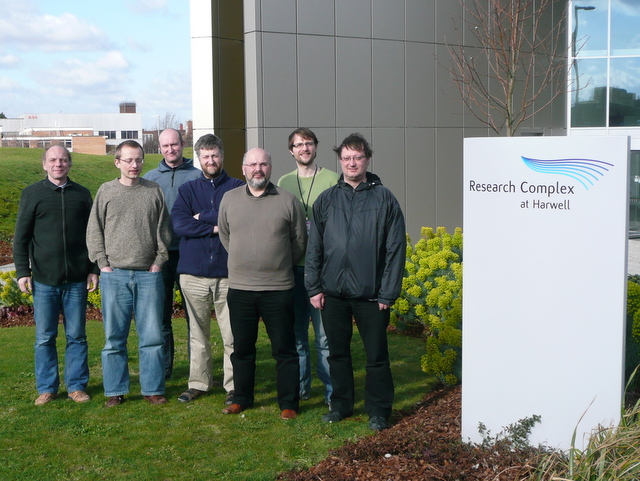Preface
Eugene Krissinel
Research Complex at Harwell, Rutherford Appleton Laboratory, Didcot OX11 0FA, UK
Dear CCP4 Users,
This Letter begins a new series of Newsletters concerning the CCP4 Suite, following major changes that happened to the CCP4 core team in the past two years. The Project has moved from Daresbury Laboratory near Liverpool to the Research complex at Harwell, next to Diamond Light Source in the Rutherford Appleton Laboratory, south of Oxford. That’s only about 170 miles away – a small distance compared to the spread of our users – but it made a considerable change. We continue to enjoy the expertise of Charles Ballard and Ronan Keegan, who served you for quite a number of previous years, and Martyn Winn gives us a helpful hand from Daresbury. These days, you may see new names on the CCP4 Helpdesk: David Waterman, Andrey Lebedev, Marcin Wojdyr and Ville Uski, who joined CCP4 from between one year to half a year ago.
CCP4 has always been a very dynamic Project, inspired by world-wide input and communications, with many changes occurring on a daily basis. The CCP4 core team is committed to providing a good service to the crystallographic community by maintaining and delivering the Suite in the most convenient way, tested and accompanied by custom support through the CCP4 Helpdesk. Over years, the Suite has grown to a considerable size. Currently, it includes some 200 programs, contributed by different authors, written in different languages and exercising a wide spectrum of personal styles. This makes the work of the CCP4 Core team very interesting, but also challenging and difficult.
Traditionally, CCP4 Newsletters accompanied CCP4 releases, as is the case now, and we usually have two releases every year. Being presented with a rapid development of our most important programs, we may introduce a quick update mechanism in the near future in order to deliver changes on a shorter, inter-release, time scale. In the 6.3.0 release, you may notice a new helper application, CCP4 Package Manager, which is a graphical CCP4 installer for Linux and Mac OS systems. We hope that this application will help us to cope with the diversity of Linux platforms and deliver platform-specific packages, such as Coot, to our users in a much more convenient way. Another new feature we are working on, is a new, cross-platform build system, which would allow a user or developer to build selected CCP4 libraries and programs on their own machines with a single command doing the whole job - from automatic checkout from CCP4 repositories (including all dependences) to final configuration and compilation. In order to assure the quality of our builds, we are setting up an automated build-and-test system for a considerable number of various platforms and compilers. This provides the long-awaited CCP4 nightly builds, some of which are already available on CCP4 web-site, and is something that our most active developers will hopefully appreciate.
In its new location, CCP4 enjoys close links to Diamond Light Source, with many users at our doorstep and many possibilities to see our software in action and get new ideas. CCP4 has a few common projects with Diamond, and are keen on providing Diamond’s MX beamlines with automated structure solution pipelines. Most certainly, this collaboration does not draw our attention away from the multi-thousand CCP4 user community elsewhere in the world, and we are equally enthusiastic and open for input and requests from anybody.
We hope that you will find the recent changes in CCP4 useful. Our Newsletters will inform you about important updates and new additions in the Suite, as well as various projects we are working on and plans that we have. Remember too, we are always looking for feedback and input from you.
Eugene Krissinel,
on behalf of the CCP4 Core team at RCaH/RAL.

The CCP4 core team. From left to right: Andrey Lebedev,
Marcin Wojdyr, Ronan Keegan, Charles Ballard, Eugene Krissinel, David Waterman
and Ville Uski